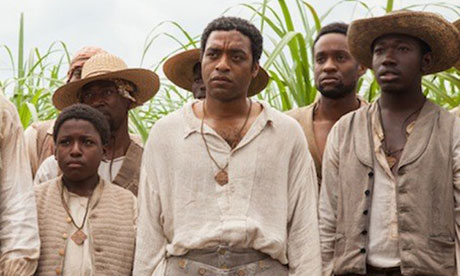
We have a new addition to our household: Saara Laine! Saara is an exchange student from Finland who is gonna be shacking up with the Dinesen's for three months. She has been here for only a few short weeks and has already taught us so much about her country and what it like to have a 17-year-old super-athlete living under your roof. (Hint: it involves a quart of milk per day and a pound of bananas, so stock up next host parents!)
Saara likes her pop culture so she came to the right house. With the exception of her terrible taste in sitcoms (How I Met Your Mother...really?), she is hungry to explore and discuss what is out there in the zeitgeist. Our first conversations were about music, movies and art that engages and inspires us. It was a fantastic gateway into knowing who she is and what she likes and dislikes. Last week, she asked me if I would take her to see a movie and, of course, I said I would. And then I found myself in a dark theatre watching a movie that was so incredibly brutal and frightening that I wondered whether I had been a good 3 month-only parent to her.
The movie was 12 Years a Slave and I will say it is an absolutely exceptional movie in every way. Like many slavery films before it, 12 Years a Slave unfolds in the sweltering heat of southern plantations but, unlike its predecessors, director and visual artist Steve McQueen’s film focuses on a free man from the north who is kidnapped and sold into slavery. His name was Solomon Northup and the story is a true account. The reason, McQueen took this angle, apparently, was because he wanted everyone in the audience to feel like the main character. And Solomon, according to McQueen was that "someone who can take you, the audience, in this unfortunate conveyor belt of slavery.”
Well, mission accomplished.
Where the movie breaks new ground is in the way that it exposes the old films on slavery - the old plantation epics - as frauds. This isn't a Gone With the Wind where the slaves live in harmony with their owners. It is also a very far cry from the absurdist fairy tale/revenge fantasy of Django Unchained. It is, as David Denby of The New Yorker, pronounced it "easily the greatest feature film ever made about American slavery". No film has humanized the experience the way that this one does. Anyone who has ever feared losing everything will identify with Solomon. And there are scenes and shots staged and photographed with such beauty that you won't forget them: in Washington, the men and women about to be shipped south, standing naked in a yard and washing themselves; the languid heat of the Louisiana summer where men chop wood from sun-up to sundown. And Solomon's face, the exceptional Chiwetel Ejiofor’s face—square jaw, furrowed brow - every time he is appalled or horrified by a situation and knows that he can't demonstrate his emotions because it will take his very life away.
I let my kids watch a lot of stuff that might be deemed inappropriate but I do it because they almost always want to talk about it afterwards. We've built a Wash, Rinse, Repeat-model for ingesting pop culture (except it's more Watch, Talk, Repeat) and it has served us well. But, after sitting through that movie with Saara, I wondered whether my model was one-size-fit-all appraoch was a sound one as she was very, very quiet afterwards. On the drive home from the theatre, I broke the ice by apologizing to her for exposing her to a movie that was emotionally very taxing. Then I told her about a few films that I would absolutely never see again: United 93, Requiem for a Dream, Leaving Las Vegas, Boys Don't Cry. I told her I would add this film to that list. She agreed that she was pleased that she'd seen it but that she, too, wouldn't watch it a second time. Difficult cinema is out there, I told her, but we all have a choice to watch or not. Some of us choose and still wish for a happy ending that we know is not coming. I think Saara figured out that she was one of those.